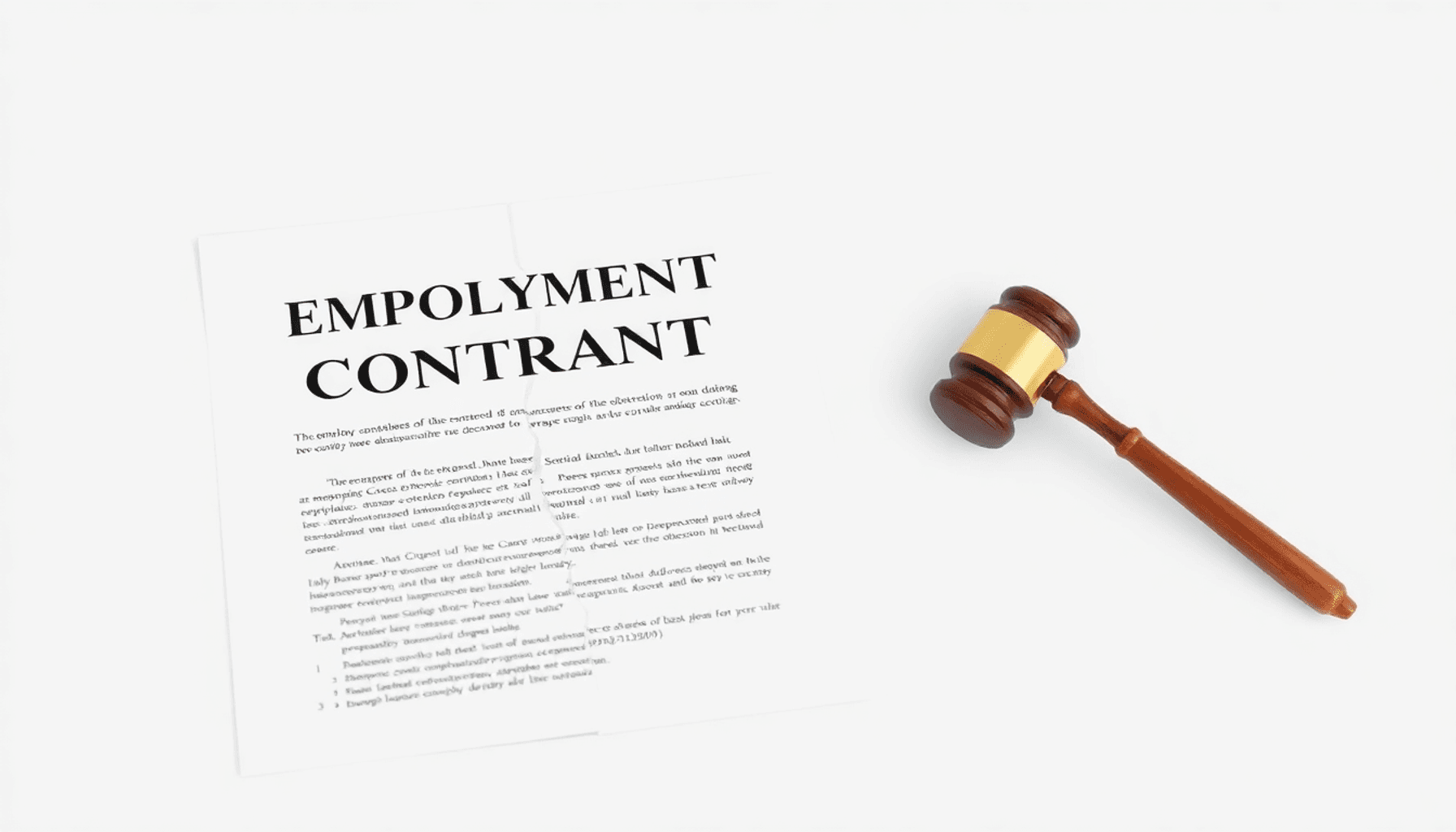Understanding General Indemnity Clauses
A general indemnity clause is a provision in contracts that obligates one party (the indemnitor) to compensate and protect another party (the indemnitee) from specified losses, damages, or liabilities. These situations can arise from contractual breaches, third-party claims, or unforeseen events. The primary purpose of this clause is to shift financial responsibility and provide security within contractual relationships.
In the world of contract law, managing risks is essential. Good contracts plan for potential problems and decide who should handle them. This is where indemnity clauses come in handy. By including an indemnity clause, parties can clearly define their obligations and protections against various risks.
Indemnity clauses help reduce financial risk by ensuring that one party will cover specific losses incurred by the other. This builds trust and stability, making it easier for businesses to engage in transactions with confidence.
Key Elements of a General Indemnity Clause
Understanding the key elements of a general indemnity clause is crucial for effectively managing risk in contractual agreements. This section explores the primary components that constitute an effective indemnity clause.
Indemnification Procedures
Indemnification procedures detail how the indemnity clause is invoked. Typically, these procedures include:
- Notice Requirements: The indemnitee must promptly notify the indemnitor of any claims or potential losses that could trigger the indemnity provision. This notification often needs to be in writing and include sufficient details about the nature of the claim.
- Defense Control: The indemnitor may have the right to control the defense against the claim. This means they can choose legal representation and decide on litigation strategies. However, the indemnitee is usually required to cooperate reasonably with the defense process.
Causation Standard
The causation standard in a general indemnity clause specifies how and when indemnity obligations are triggered. Common causation language includes:
- “Arising Out Of”: This broad language means that any connection between the claim and the covered event can trigger indemnity.
- “Due To” or “Caused By”: These phrases imply a direct causal relationship between the event and the loss, providing a narrower scope than “arising out of”.
- “In Connection With”: Similar to “arising out of”, this phrase offers wide-ranging coverage by including events indirectly related to the specified situation.
Treatment of Comparative Fault
Comparative fault principles determine how liability is apportioned when multiple parties contribute to a loss. In general indemnity clauses, this involves:
- Pro Rata Allocation: Losses are divided based on each party’s degree of fault. If both parties are partially responsible, each bears a proportionate share of damages.
- Sole Fault Exclusion: Some clauses exclude indemnification if the loss is solely due to the indemnitee’s negligence or willful misconduct.
- Joint and Several Liability: In some cases, one party may be required to cover all losses initially, with potential reimbursement from other responsible parties later on.
Understanding these key elements helps you draft comprehensive and enforceable general indemnity clauses, ensuring robust risk management in your contracts. Keep these factors in mind as you navigate through different contractual agreements and their specific requirements.
Scope and Limitations of General Indemnity Clauses
Identification of Parties
In any general indemnity clause, clearly identifying the parties involved is crucial. The indemnitor is the party who agrees to compensate for losses, while the indemnitee is the party protected under the clause. Misidentification or lack of clarity can lead to disputes about responsibility and enforcement.
Definition of Covered Losses
A well-drafted indemnity clause must specify the types of losses covered. These generally include:
- Direct Damages: Immediate losses resulting from an incident.
- Indirect/Consequential Damages: Secondary losses that occur as a consequence of the initial incident.
- Litigation Costs: Legal fees and other expenses associated with defending claims.
Common Claims that Trigger Indemnity Obligations
Certain scenarios typically activate indemnity provisions. These often include:
- Breaches of Contract: Non-compliance with contractual terms.
- Negligence: Failure to exercise reasonable care that results in damage or loss.
- Third-Party Claims: Allegations made by external entities, which may include anything from personal injuries to intellectual property infringements.
Clear definitions and example scenarios help prevent ambiguity, ensuring parties understand their obligations within the scope and limitations of the general indemnity clause.
Considerations for Drafting Effective General Indemnity Clauses
Drafting effective clauses involves understanding how they interact with other parts of the contract.
Interplay with Other Contractual Provisions
General indemnity clauses often work alongside:
- Liability Caps: Setting a maximum limit on the indemnitor’s financial responsibility.
- Insurance Requirements: Ensuring that the indemnitor has adequate insurance to cover potential claims, adding an extra layer of protection.
These elements create a comprehensive risk management strategy, ensuring that all potential liabilities are covered.
Survival Clause in Indemnity Agreements
Certain clauses may need to persist beyond the termination of the main contract. This is where a survival clause comes into play:
- Continuation of Obligations: Specifies that indemnity obligations continue even after the primary agreement ends.
- Long-Term Protection: Provides ongoing security against claims that may arise post-contract termination, ensuring both parties remain protected.
By addressing these key considerations, you can draft more robust and effective general indemnity clauses.
Real-World Applications and Variations of General Indemnity Clauses
General indemnity clauses are used in various types of contracts, each designed to address the unique needs and risks of different industries.
Examples from Different Types of Contracts
1. IP Licensing Agreements
In intellectual property (IP) licensing agreements, a general indemnity clause protects the licensee against claims that the licensed IP infringes on third-party rights. The indemnitor (licensor) ensures compensation for any legal fees, settlements, or damages resulting from such claims.
Example: A software company licenses its technology to a third party. The licensor includes a general indemnity clause to cover potential infringement lawsuits, thereby mitigating the risk for the licensee.
2. Service Contracts
Service contracts often include general indemnity clauses to shield clients from liabilities arising out of the service provider’s actions or omissions. This includes negligence or failure to perform contractual obligations.
Example: A cleaning service company enters into a contract with a corporate office. The contract contains an indemnity clause requiring the cleaning service to cover any damages or injuries caused by their employees while on the premises.
3. Product Supply Agreements
In product supply agreements, suppliers may provide a general indemnity clause to protect buyers from losses due to defective products. This covers direct damages, recall costs, and associated legal expenses.
Example: A manufacturer supplies parts to an automotive company. The supply agreement includes an indemnity clause obligating the manufacturer to address any defects that lead to vehicle recalls or customer claims.
4. Construction Contracts
Construction contracts frequently incorporate general indemnity clauses where contractors agree to indemnify project owners against claims arising from construction activities, including property damage or personal injury.
Example: A construction firm is hired for building a commercial complex. The contract stipulates that the firm will indemnify the property developer for any accidents occurring on-site due to contractor negligence.
The practical application of these clauses ensures that parties are protected against unforeseen risks and liabilities specific to their industry and contractual relationships.
General Indemnity Clause vs. Hold Harmless Agreement
Understanding the differences between a general indemnity clause and a hold harmless agreement is crucial for effective risk management in contracts. While both mechanisms aim to transfer risk, their scope and legal implications differ:
General Indemnity Clause
This clause requires the indemnitor to compensate the indemnitee for specific losses, covering various liabilities such as direct damages, indirect damages, and litigation costs. It often includes detailed procedures for invoking the indemnity, causation standards, and treatment of comparative fault.
Hold Harmless Agreement
This agreement primarily focuses on transferring fault by protecting the indemnitee from claims arising due to the indemnitor’s actions or negligence. It is generally more concerned with passive or vicarious liability rather than providing comprehensive coverage for different types of losses.
These distinctions impact how each clause functions within contracts, influencing the extent of protection and financial responsibility. Understanding these nuances helps in drafting clauses that align with your risk management strategy.




